The Russian Revolution, 1905-1921
The Russian Revolution, 1905-1921 is a new history of Russia's revolutionary era as a story of experience-of people making sense of history as it unfolded in their own lives and as they took part in making history themselves. The major events, trends, and explanations, reaching from Bloody Sunday in 1905 to the final shots of the civil war in 1921, are viewed through the doubled perspective of the professional historian looking backward and the contemporary journalist reporting and interpreting history as it happened. The volume then turns toward particular places and people: city streets, peasant villages, the margins of empire (Central Asia, Ukraine, the Jewish Pale), women and men, workers and intellectuals, artists and activists, utopian visionaries, and discontents of all kinds. We spend time with the famous (Vladimir Lenin, Lev Trotsky, Alexandra Kollontai, Vladimir Mayakovsky, Isaac Babel) and with those whose names we don't even know. Key themes include difference and inequality (social, economic, gendered, ethnic), power and resistance, violence, and ideas about justice and freedom. Written especially for students and general readers, this history relies extensively on contemporary texts and voices in order to bring the past and its meanings to life. This is a history about dramatic and uncertain times and especially about the interpretations, values, emotions, desires, and disappointments that made history matter to those who lived it
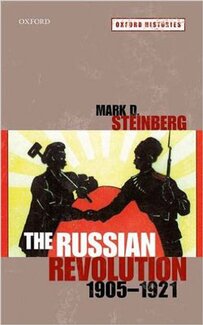
The Norton Anthology of Western Philosophy: After Kant, Volume I: The Interpretive Tradition
The Norton Anthology of Western Philosophy: After Kant provides a comprehensive introduction to the predominantly European (“Continental”) interpretive tradition of philosophy after Kant in one volume, and to the now predominantly Anglo-American analytic tradition in the other. It features the extensive editorial apparatus for which Norton Anthologies have been known and trusted by professors and students alike for more than 50 years. Ideal for courses at all levels in the history of philosophy after Kant, these volumes belong on every philosopher’s (and philosophy student’s) bookshelf.
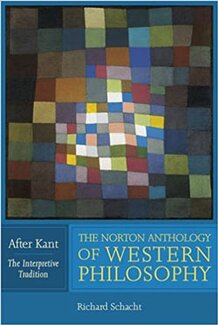
A History of Russia
Now extensively revised in this ninth edition, A History of Russia covers the entire span of the country's history, from ancient times to the post-communist present. Keeping with the hallmark of the text, Riasanovsky and Steinberg examine all aspects of Russia's history--political, international, military, economic, social, and cultural--with a commitment to objectivity, fairness, and balance, and to reflecting recent research and new trends in scholarly interpretation. In the ninth edition, this includes expanded attention to the experiences of ordinary men and women and to imperial expansion and diversity. Extensively revised and with a more streamlined organization, A History of Russia, Ninth Edition, includes recent developments in Ukraine and Russia's near abroad in the Putin era.

Voices of Drought: The Politics of Music and Environment in Northeastern Brazil
In Voices of Drought, Michael B. Silvers proposes a scholarship focused on environmental justice to understand key questions in the study of music and the environment. His ecomusicological perspective offers a fascinating approach to events in Ceará, a northeastern Brazilian state affected by devastating droughts. These crises have a profound impact on social difference and stratification, and thus on forró music in the sertão (backlands) of the region. At the same time, the complex interactions of popular music and social conditions also help create the environment. Silvers offers case studies focused on the sertão that range from the Brazilian wax harvested in Ceará for use in early wax cylinder sound recordings to the drought- and austerity-related cancellation of Carnival celebrations in 2014-16. Unearthing links between music and the environmental and social costs of drought, his daring synthesis explores ecological exile, poverty, and unequal access to water resources alongside issues like corruption, prejudice, unbridled capitalism, and expanding neoliberalism.
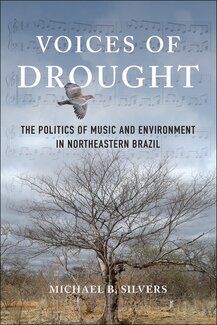
Gan's Constructivism: Aesthetic Theory for an Embedded Modernism
This compelling new account of Russian constructivism repositions the agitator Aleksei Gan as the movement’s chief protagonist and theorist. Primarily a political organizer during the revolution and early Soviet period, Gan brought to the constructivist project an intimate acquaintance with the nuts and bolts of “making revolution.” Writing slogans, organizing amateur performances, and producing mass-media objects define an alternative conception of “the work of art”—no longer an autonomous object but a labor process through which solidarities are built. In an expansive analysis touching on aesthetic and architectural theory, the history of science and design, sociology, and feminist and political theory, Kristin Romberg invites us to consider a version of modernism organized around the radical flattening of hierarchies, a broad distribution of authorship, and the negotiation of constraints and dependencies. Moving beyond Cold War abstractions, Gan’s Constructivism offers a fine-grained understanding of what it means for an aesthetics to be political.

With Stones in Our Hands: Writings on Muslims, Racism, and Empire
After September 11, 2001, the global War on Terror has made clear that Islam and Muslims are central to an imperial system of racism. Prior to 9/11, white supremacy had a violent relationship of dominance with Islam and Muslims. Racism against Muslims today borrows from centuries of white supremacy and is a powerful and effective tool to maintain the status quo.
With Stones in Our Hands compiles writings by scholars and activists who are leading the struggle to understand and combat anti-Muslim racism. Through a bold call for a politics of the Muslim Left and the poetics of the Muslim International, this book offers a glimpse into the possibilities of social justice, decolonial struggle, and political solidarity. The essays in this anthology reflect a range of concerns such as the settler colonial occupation of Palestine, surveillance and policing, blackness and radical protest traditions, militarism and empire building, social movements, and political repression. With Stones in Our Hands offers new ideas to achieve decolonization and global solidarity.
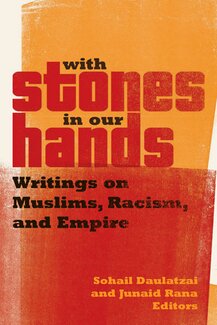
The Voice of Technology: Soviet Cinema's Transition to Sound, 1928-1935
As cinema industries around the globe adjusted to the introduction of synch-sound technology, the Soviet Union was also shifting culturally, politically, and ideologically from the heterogeneous film industry of the 1920s to the centralized industry of the 1930s, and from the avant-garde to Socialist Realism. In The Voice of Technology: Soviet Cinema’s Transition to Sound, 1928–1935, Lilya Kaganovsky explores the history, practice, technology, ideology, aesthetics, and politics of the transition to sound within the context of larger issues in Soviet media history. Industrialization and centralization of the cinema industry greatly altered the way movies in the Soviet Union were made, while the introduction of sound radically influenced the way these movies were received. Kaganovsky argues that the coming of sound changed the Soviet cinema industry by making audible, for the first time, the voice of State power, directly addressing the Soviet viewer. By exploring numerous examples of films from this transitional period, Kaganovsky demonstrates the importance of the new technology of sound in producing and imposing the "Soviet Voice."
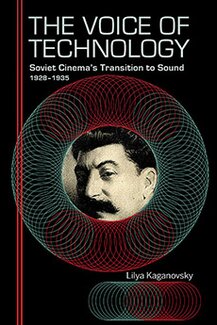
The Oxford Handbook of Arab Novelistic Traditions
The Oxford Handbook of Arab Novelistic Traditions is the most comprehensive treatment of the subject to date. In scope, the book encompasses the genesis of the Arabic novel in the second half of the nineteenth century and its development to the present in every Arabic-speaking country and in Arab immigrant destinations on six continents. Editor Waïl S. Hassan and his contributors describe a novelistic phenomenon which has pre-modern roots, stretching centuries back within the Arabic cultural tradition, and branching outward geographically and linguistically to every Arab country and to Arab writing in many languages around the world.
The first of three innovative dimensions of this Handbook consists of examining the ways in which the Arabic novel emerged out of a syncretic merger between Arabic and European forms and techniques, rather than being a simple importation of the latter and rejection of the former, as early critics of the Arabic novel claimed. The second involves mapping the novel geographically as it took root in every Arab country, developing into often distinct though overlapping and interconnected local traditions. Finally, the Handbook concerns the multilingual character of the novel in the Arab world and by Arab immigrants and their descendants around the world, both in Arabic and in at least a dozen other languages. The Oxford Handbook of Arab Novelistic Traditions reflects the current status of research in the broad field of Arab novelistic traditions and signals toward new directions of inquiry.
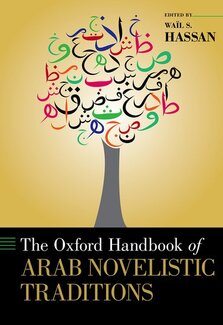
Lookout America! The Secret Hollywood Studio at the Heart of the Cold War
This is the first work ever written on the most important film studio in U.S. Cold War history: Lookout Mountain Laboratory, known during the 1960s as the 1352nd Photographic Group of the United States Air Force. The studio, christened Lookout Mountain Laboratory after its hilltop location in Hollywood, operated from 1947 to 1969 at the nexus between the emerging military-industrial complex and the Hollywood culture industry. It made hundreds of movies, processed hundreds of thousands of feet of film, stored volumes of Cold War imagery, and served as a regular meeting spot for atomic scientists, military brass, and Hollywood professionals. In the course of its history, Lookout Mountain Laboratory employed hundreds of Hollywood studio veterans and could summon the services, as needed, of such film luminaries as John Ford, Jimmy Stewart, and Marilyn Monroe. Moreover, Lookout Mountain Laboratory worked closely with the most important innovators in scientific and technical film and photography in mid-century America, above all the government contractor EG&G (or Edgerton, Germeshausen, and Grier). Based on extensive archival research and interviews, this landmark history engages with issues of the Cold War, the visual culture of the era, and the cultural collaborations of the national-security state.

Black Aesthetics and the Interior Life
Christopher Freeburg’s Black Aesthetics and the Interior Life offers a crucial new reading of a neglected aspect of African American literature and art across the long twentieth century. Rejecting the idea that the most dehumanizing of black experiences, such as lynching or other racial violence, have completely robbed victims of their personhood, Freeburg rethinks what it means to be a person in the works of black artists. This book advances the idea that individual persons always retain the ability to withhold, express, or change their ideas, and this concept has profound implications for long-held assumptions about the relationship between black interior life and black collective political interests.
Examining an array of seminal black texts—from Ida B. Wells’s antilynching pamphlets to works by Richard Wright, Nina Simone, and Toni Morrison—Freeburg demonstrates that the personhood represented by these writers unsettles rather than automatically strengthens black subjects’ relationships to political movements such as racial uplift, civil rights, and black nationalism. He shows how black artists illuminate the challenges of racial collectivity while stressing the vital stakes of individual personhood. In his challenge to current African Americanist criticism, Freeburg makes a striking contribution to our understanding of African American literature and culture.
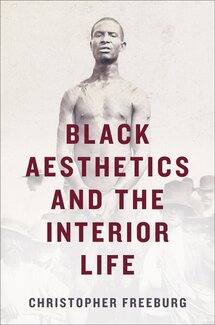
100 English Building
608 South Wright Street
Urbana, Illinois 61801